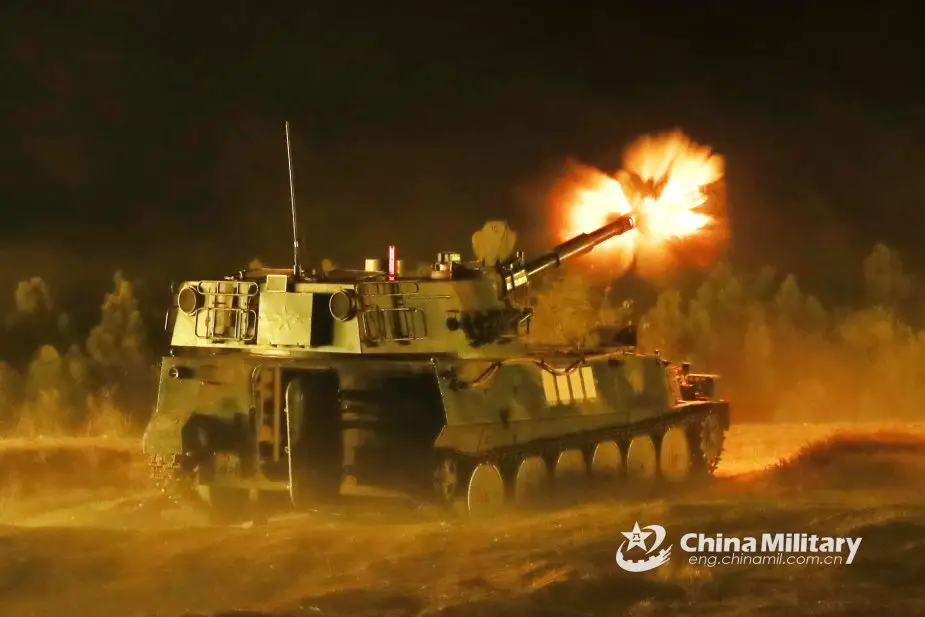Chinese Defense budget increases 850 percent over 20 years
China’s defense budget has grown 850 % in the last 20 years, from USD 20 billion to USD 170 billion in 2018, a top Pentagon official told lawmakers on Thursday, Dec. 5, the India Post reports.

A self-propelled howitzer attached to a brigade under the PLA 72nd Group Army fires 122mm shells at mock target during a night live-fire training exercise on October 28, 2019 (Picture source: eng.chinamil.com.cn/Photo by Zhang Wenjyu)
China possesses one of the largest armies in the world. It continues to add to its capabilities and is increasingly provocative, such as its activities in the South China Sea and in Africa, where China established its first overseas base ever in Djibouti in 2017, said Under Secretary of Defense for Policy John C Rood. He also noted that the real figures are significantly higher than China’s official budget.
China, Rood said, has also sought to spend funding in ways that are specifically targeted at key US military advantages with new capabilities in such areas as space, cyber, electronic warfare, undersea warfare, fighter aircraft, bombers equipped with long range cruise missiles, and other anti-access, area denial (A2AD) capabilities. Giving example, he said China is using cyber capabilities to advance its military and strategic.
China’s ground forces alone exceed one million personnel. A large maritime militia supplements its 300-ship navy and 250-ship coast guard. Its air forces operate over 2,600 aircraft. It maintains a ballistic missile arsenal consisting of 750-1500 short range, 150-450 medium-range, and 80-160 intermediate-range variants, Rood said. Chinese development of nuclear capabilities is extensive, he said, adding that the People’s Liberation Army (PLA) Navy intends to increase the number of operational SSBN class submarines from four to six. The Rocket Forces maintain approximately 90 Intercontinental Ballistic Missiles, including road-mobile delivery systems. Rounding out their nuclear triad is the PLA Air Force’s operational H-6K, and the prospect of a future nuclear-capable stealth strategic bomber estimated to start in 2025. These delivery systems equipped with nuclear weapons give China several ways of reaching the United States, and exemplify China’s large-scale effort to build larger and more capable forces armed with nuclear weapons, Rood said.
The senior Pentagon official told lawmakers that Beijing’s activities, such as militarization of the South China Sea, development of offensive cyber and space capabilities, and legal and illicit efforts to acquire sensitive or advanced dual-use technologies to support its military objectives, are inconsistent with the rules-based international order, which has benefited all nations, including China.
Senator Jim Inhofe, Chairman of Senate Armed Services Committee, said while China was increasing it military spending, the US under the Obama administration “actually reduced” its defense appropriations by 25 %. “It’s something we’re going to have to deal with. So let’s get real. If we’re serious about competing with China and Russia, we have to show that our democracy can give our troops what they need and when they need it,” Inhofe said.


























